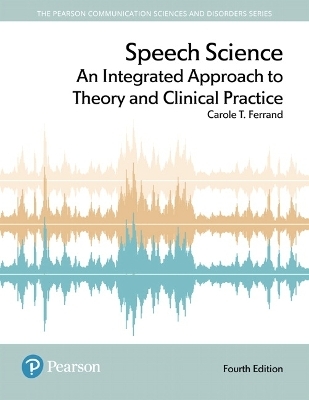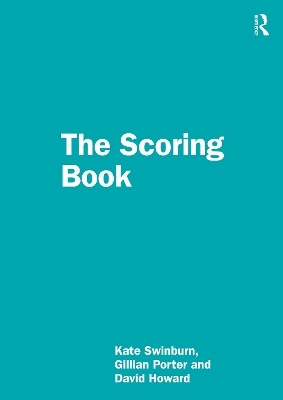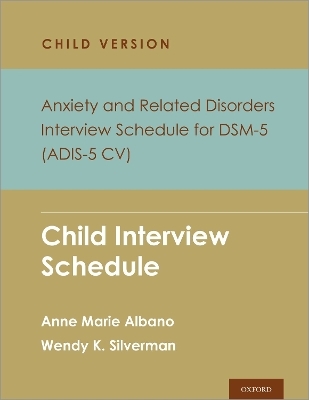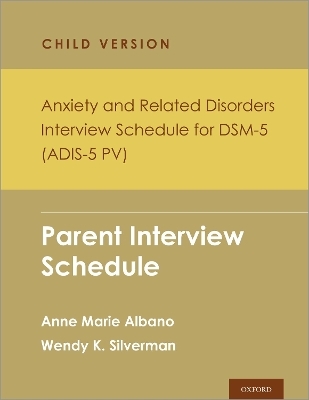
Speech Science
Pearson
978-0-13-467544-2 (ISBN)
- Titel z.Zt. nicht lieferbar
- Versandkostenfrei innerhalb Deutschlands
- Auch auf Rechnung
- Verfügbarkeit in der Filiale vor Ort prüfen
- Artikel merken
If purchasing or renting from companies other than Pearson, the access codes for the Enhanced Pearson eText may not be included, may be incorrect, or may be previously redeemed. Check with the seller before completing your purchase.
This package includes the Enhanced Pearson eText and the bound book version.
Speech Science: An Integrated Approach to Theory and Clinical Practice, 4th Edition focuses on the relationship between the scientific study of speech production and perception and the application of the material to the effective evaluation and treatment of communication disorders. Theoretical material is presented first, followed by clinical application chapters highlighting specific disorders. The organization of chapters in the new edition now more closely follows the speech subsystems approach, beginning with basic acoustics, and moving on to the respiratory system, phonatory system, articulatory/resonatory system, auditory system, and nervous system. As in previous editions, the book concludes with information on classic and current models and theories of speech production and perception. New and revised full color illustrations and larger spectrograms supplement the concepts presented by clearly depicting scientific and anatomical material and ensuring understanding of the links between the underlying science and human communicative behavior.
Improve mastery and retention with the Enhanced Pearson eText*
The Enhanced Pearson eText provides a rich, interactive learning environment designed to improve student mastery of content. The Enhanced Pearson eText is:
Engaging. The new interactive, multimedia learning features were developed by the authors and other subject-matter experts to deepen and enrich the learning experience.
Convenient. Enjoy instant online access from your computer or download the Pearson eText App to read on or offline on your iPad® and Android® tablet.*
Affordable. Experience the advantages of the Enhanced Pearson eText along with all the benefits of print for 40% to 50% less than a print bound book.
*The Enhanced eText features are only available in the Pearson eText format. They are not available in third-party eTexts or downloads.
*The Pearson eText App is available on Google Play and in the App Store. It requires Android OS 3.1-4, a 7” or 10” tablet, or iPad iOS 5.0 or later.
0134675444 / 9780134675442 Speech Science: An Integrated Approach to Theory and Clinical Practice, with Enhanced Pearson eText -- Access Card Package
Package consists of:
0134481453 / 9780134481456 Speech Science: An Integrated Approach to Theory and Clinical Practice
0134675436 / 9780134675435 Speech Science: An Integrated Approach to Theory and Clinical Practice, Enhanced Pearson eText -- Access Card
Dr. Carole Ferrand earned her BA in English at the University of the Witwatersrand in Johannesburg, and her MS and PhD in Communication Sciences and Disorders from the Pennsylvania State University. She teaches undergraduate and graduate courses in speech science, and a graduate level course in Voice Disorders. Her research focuses on acoustic attributes of normal and disordered speech production. In addition to Speech Science: An Integrated Approach to Theory and Clinical Practice, she is the author of the textbook, Voice Disorders: Scope of Theory and Practice. When not writing books, Dr. Ferrand enjoys reading historical fiction, a capella singing, and playing banjo.
BRIEF TABLE OF CONTENTS
CHAPTER 1: The Nature of Sound
CHAPTER 2: The Respiratory System
CHAPTER 3: Clinical Application: Evaluation and Treatment of Respiratory Disorders
CHAPTER 4: The Phonatory/Laryngeal System
CHAPTER 5: Clinical Application: Evaluation and Treatment of Phonatory Disorders
CHAPTER 6: The Articulatory/Resonatory System
CHAPTER 7: Clinical Application: Evaluation and Treatment of Articulatory and Resonance Disorders
CHAPTER 8: The Auditory System
CHAPTER 9: Clinical Application: Evaluation and Treatment of Disorders Related to Hearing Impairment
CHAPTER 10: The Nervous System
CHAPTER 11: Clinical Application: Brain Imaging in the Evaluation and Treatment of Disorders of the Nervous System
CHAPTER 12: Models and Theories of Speech Production and Perception
DETAILED TABLE OF CONTENTS
Foreword xiii
Preface xv
Acknowledgments xvii
Introduction xix
Chapter 1: The Nature of Sound 1
International System of Units 2
Basic Physics Concepts 3
Mass, Force, Weight, Volume, and Density 3
Speed, Velocity, Momentum, Acceleration, (and Inertia 5
Elasticity and Stiffness 5
Work, Energy, Power, and Intensity 5
Pressure 6
Sound: Changes in Air Pressure 7
Behavior of Air 7
Air Pressure 7
Airflow 8
Relationship between Air Pressure, Air Volume, and Air Density 8
The Nature of Sound 9
Why Molecules Keep Vibrating: Elasticity, Inertia, and Friction 11
Sound Propagation 13
Wave Motion of Sound 13
Longitudinal Versus Transverse Waves 13
Mass/Spring System 15
Simple Harmonic Motion 15
Frequency, Period, Wavelength, Velocity, and Amplitude 16
Visually Depicting Sound Waves: Waveforms 18
Pure Tones and Complex Sounds 21
Pure Tones 21
Complex Sounds 21
Periodic Versus Aperiodic Complex Waves 21
Visually Depicting Sound Waves: Spectra 23
Sound Absorption, Reflection, Refraction, and Diffraction 24
Constructive and Destructive Interference 28
Attributes of Sounds 31
Frequency and Pitch 31
Frequency: Human Range of Hearing 32
Amplitude, Intensity, and Loudness 32
Decibel Scale 34
Logarithms and Ratios 34
Perception on the dB Scale 36
Advantages of the Decibel Scale 37
Applications of the Decibel Scale 38
Resonance 39
Acoustic Resonance 42
Tube Resonance and Standing Waves 44
Acoustic Resonators as Filters 47
Bandwidth 48
Cutoff Frequencies 49
Resonance Curves 49
Parameters of a Filter 49
Types of Filters 50
Summary 53
Review Exercises 54
Chapter 2: The Respiratory System 55
Pulmonary Apparatus 55
Bronchial Tree 56
Chest Wall 59
Muscles of Respiration 62
Accessory Muscles of Respiration 62
Muscles of the Abdomen 62
Pleural Linkage 64
Moving Air Into and Out of the Lungs 66
Inhalation 66
Exhalation 67
Rate of Breathing 67
Lung Volumes and Capacities 68
Resting Expiratory Level 69
Lung Volumes 69
Tidal Volume 70
Inspiratory Reserve Volume 70
Expiratory Reserve Volume 71
Residual Volume 71
Dead Air 72
Lung Capacities 72
Vital Capacity 72
Functional Residual Capacity 72
Inspiratory Capacity 72
Total Lung Capacity 73
Differences between Breathing for Life and Breathing for Speech 75
Location of Air Intake 76
Ratio of Time for Inhalation Versus (Exhalation 77
Volume of Air Inhaled and Exhaled (per Cycle 77
Muscle Activity for Exhalation 78
Chest Wall Shape 79
Breathing Patterns for Speech 80
Speech Breathing for Isolated Vowels and Connected Speech 82
Changes in Speech Breathing Over the Life Span 83
Features of Speech Breathing in Children 83
Features of Speech Breathing in Older Adults 84
Summary 86
Review Exercises 87
Chapter 3: Clinical Application: Evaluation and Treatment of Respiratory Disorders 88
Measurement of Respiratory Variables 88
Pulmonary Function Testing 89
Respiratory Kinematic Analysis 92
Air Pressures 94
Airflow 95
Classification of Respiratory Problems 96
Symptoms of Respiratory Disorders 97
Respiratory Function and Speech Production in Selected Disorders 98
Principles of Clinical Management of Speech Breathing Disorders 98
Neurological Disorders 99
Parkinson’s Disease 99
Cerebellar Disease 101
Cervical Spinal Cord Injury 102
Cerebral Palsy 103
Mechanical Ventilation 104
Voice Disorders 106
Stuttering 108
Asthma 111
Paradoxical Vocal Fold Motion 113
Summary 115
Review Exercises 115
Integrative Case Studies 116
Chapter 4: The Phonatory/Laryngeal System 118
Laryngeal Skeleton 118
Bones, Cartilages, and Membranes 118
Joints of the Larynx 123
Valves within the Larynx 127
Aryepiglottic Folds 127
False Vocal Folds 127
True Vocal Folds 127
Cover–Body Model 129
Glottis 130
Muscles of the Larynx 130
Extrinsic Muscles 130
Intrinsic Muscles 131
Myoelastic–Aerodynamic Theory of Phonation 137
Models of Vocal Fold Vibration 138
Features of Vocal Fold Vibration 139
Changes in the Phonatory/Laryngeal System Over the Life Span 144
Infancy and Childhood 144
Puberty 144
Adulthood 145
Vocal Quality 147
Normal Voice Quality 148
Abnormal Voice Qualities 149
Vocal Registers 151
Physiologic and Acoustic Characteristics of Registers 152
Use of Different Registers in Singing and Speaking 153
Summary 154
Review Exercises 154
Chapter 5: Clinical Application: Evaluation and Treatment of Phonatory Disorders 155
Measurement of Phonatory Variables 155
Acoustic Analysis 155
Perturbation Measures 160
Noise Measures 162
Laryngeal Visualization Methods 163
Electroglottography 163
EGG and Register 167
EGG Slope Quotients 167
Techniques for Visualizing the Larynx 170
Advantages of Acoustic and Visual Analysis of Phonatory Function 174
Evaluation and Treatment of Communication Disorders Involving the Phonatory System 176
Neurological Disorders 176
Benign Mucosal Lesions 181
Laryngeal Cancer 183
Hearing Impairment 186
Transsexual Voice 187
Stuttering 188
Summary 191
Review Exercises 192
Integrative Case Studies 192
Chapter 6: The Articulatory/Resonatory System 195
Articulators of the Vocal Tract 195
Oral Cavity 196
Lips 197
Mandible 198
Maxilla 199
Teeth 200
Hard Palate 203
Soft Palate 203
Tongue 207
Pharynx 211
Muscles of the Pharynx 212
Nasal Cavities 213
Valves of the Vocal Tract 214
Traditional Classification System of Consonants and Vowels 215
Place of Articulation of English (Consonants 215
Manner of Articulation of English (Consonants 216
Voicing 221
Vowel Classification 221
Vocal Tract Resonance 223
Characteristics of the Vocal Tract Resonator 224
Source-Filter Theory of Vowel Production 226
Formant Frequencies Related to Oral and Pharyngeal Volumes 228
Vowel Formant Frequencies 231
F1/F2 Plots 233
Spectrographic Analysis 234
Narrowband and Wideband Spectrograms 235
Relationship Between Articulation and Spectrographic Characteristics of Vowels and Consonants 235
Vowels 236
Diphthongs 236
Nasals 238
Glides 239
Liquids 239
Stops 240
Fricatives 244
Affricates 246
The Production of Speech Sounds in Context 246
Coarticulation 247
Speaking Rate 249
Suprasegmentals 249
Summary 253
Review Exercises 253
Chapter 7: Clinical Application: Evaluation and Treatment of Articulatory and Resonance Disorders 255
Articulation, Intelligibility, and Instrumental Measurement 255
Ultrasound 256
Electropalatography and Glossometry 257
Magnetic Resonance Imaging 258
Electromagnetic Articulography 258
Evaluation and Treatment of Communication Disorders Involving Articulation and Resonation 260
Dysarthria/Apraxia 260
Hearing Impairment 267
Cochlear Implantation 270
Speech Sound Disorders 272
Cleft Palate 274
Stuttering 275
Resonance Problems 76
Summary 278
Review Exercises 278
Integrative Case Studies 279
Chapter 8: The Auditory System 282
Anatomy of the Ear 282
Outer Ear 282
Tympanic Membrane 284
Middle Ear 284
Inner Ear 288
Perception of Speech 293
Segmentation Problem 293
Role of Redundancy in Speech (Perception 294
Instrumental Analysis of Vowel and Consonant Perception 294
Perception of Vowels and Diphthongs 295
Formant Frequency Relationships 295
Diphthongs 297
Consonants 298
Categorical Perception 298
Multiple Acoustic Cues 299
Influence of Coarticulation 299
Perception of Consonants 300
Liquids 300
Glides 300
Nasals 300
Stops 301
Fricatives 303
Affricates 303
Summary 304
Review Exercises 304
Chapter 9: Clinical Application: Evaluation and Treatment of Disorders Related to Hearing Impairment 305
Types of Hearing Loss 305
Diagnosis of Hearing Impairment 306
Immittance Audiometry 306
Tympanometry 307
Static-Acoustic Middle Ear Admittance 311
Acoustic Reflex Testing 311
Otoacoustic Emissions Testing 312
Auditory Brain Stem Response Testing 313
Hearing Loss and Speech Perception 314
Clinical Application 314
Phoneme Recognition in Speakers with Hearing Loss 315
Acoustic Cues Used in Phoneme (Recognition 316
Vowel Perception 316
Consonant Perception 317
Cochlear Implants 317
Clinical Application 320
Otitis Media and Speech Perception 320
Language and Reading Disability and Speech Perception 321
Temporal Processing Problems 322
Developmental Dyslexia and Speech Perception 324
Articulatory Problems and Speech Perception 324
Clinical Application 326
Summary 326
Review Exercises 327
Integrative Case Studies 327Chapter 10
Chapter 10: The Nervous System 328
Brain Tissue 329
Glial Cells 329
Neurons 330
Neuronal Function 333
Neurotransmission 333
Central and Peripheral Nervous (Systems 338
Central Nervous System 339
Functional Brain Anatomy 342
Cortex 342
Cortical Connections 344
Lobes of the Brain 345
Subcortical Areas of the Brain 350
Basal Nuclei 350
Thalamus 352
Hypothalamus 353
Brain Stem 354
Midbrain 355
Pons 355
Medulla 355
Cerebellum 356
Spinal Cord 357
Spinal Nerves 361
Cranial Nerves 362
CN V: Trigeminal 363
CN VII: Facial 365
CN VIII: Vestibulocochlear 365
CN IX: Glossopharyngeal 365
CN X: Vagus 365
CN XII: Hypoglossal 367
Blood Supply to the Brain 368
Motor Control Systems Involved in Speech Production 369
Motor Cortex 370
Upper and Lower Motor Neurons 372
Direct and Indirect Systems 375
Motor Units 375
Principals of Motor Control 378
Role of Feedback and Feedforward in Speech Motor Control 378
Role of Sensory Information in Speech Motor Control 379
Efference Copy 379
Summary 380
Review Exercises 380
Chapter 11: Clinical Application: Brain Imaging in the Evaluation and Treatment of Disorders of the Nervous System 381
Techniques for Imaging Brain (Structure 382
Computerized Tomography 382
Magnetic Resonance Imaging 383
Techniques for Imaging Brain Function 384
Functional Magnetic Resonance Imaging 384
Positron Emission Tomography 385
Single Photon Emission Computed Tomography 385
Electroencephalography and Evoked Potentials 386
Transcranial Magnetic Stimulation 388
Use of Brain Imaging Techniques in Communication Disorders 390
Stuttering 390
Stroke 391
Parkinson’s Disease 392
Multiple Sclerosis 393
Alzheimer’s Disease 394
Summary 395
Review Exercises 395
Integrative Case Studies 396
Chapter 12: Models and Theories of Speech Production and Perception 397
Models and Theories 398
Models 398
Theories 399
Issues Related to Organization and Regulation of Speech Motor Control 400
The Serial-Order Issue 400
Degrees of Freedom 401
Context-Sensitivity Problem 401
Models and Theories of Speech Production 401
Dynamic Systems Models 401
Connectionist Models 402
Spatial and Articulatory Target Models 402
Feedback and Feedforward Models 404
The DIVA Model 405
Speech Perception 406
Specialization of Speech Perception 406
Infant Perception 407
Models and Theories of Speech Perception 408
Acoustic Invariance Theory 408
Direct Realism 409
TRACE Model 409
Logogen Theory 410
Cohort Theory 410
Fuzzy Logical Model of Perception 410
Native Language Magnet Theory 411
Motor Theory 411
Summary 413
Review Exercises 414
Glossary 415
References 431
Index 459
| Sprache | englisch |
|---|---|
| Maße | 213 x 272 mm |
| Gewicht | 1089 g |
| Themenwelt | Geisteswissenschaften ► Psychologie ► Biopsychologie / Neurowissenschaften |
| Medizin / Pharmazie ► Gesundheitsfachberufe ► Logopädie | |
| Medizin / Pharmazie ► Medizinische Fachgebiete | |
| Sozialwissenschaften ► Pädagogik ► Berufspädagogik | |
| ISBN-10 | 0-13-467544-4 / 0134675444 |
| ISBN-13 | 978-0-13-467544-2 / 9780134675442 |
| Zustand | Neuware |
| Informationen gemäß Produktsicherheitsverordnung (GPSR) | |
| Haben Sie eine Frage zum Produkt? |
aus dem Bereich


